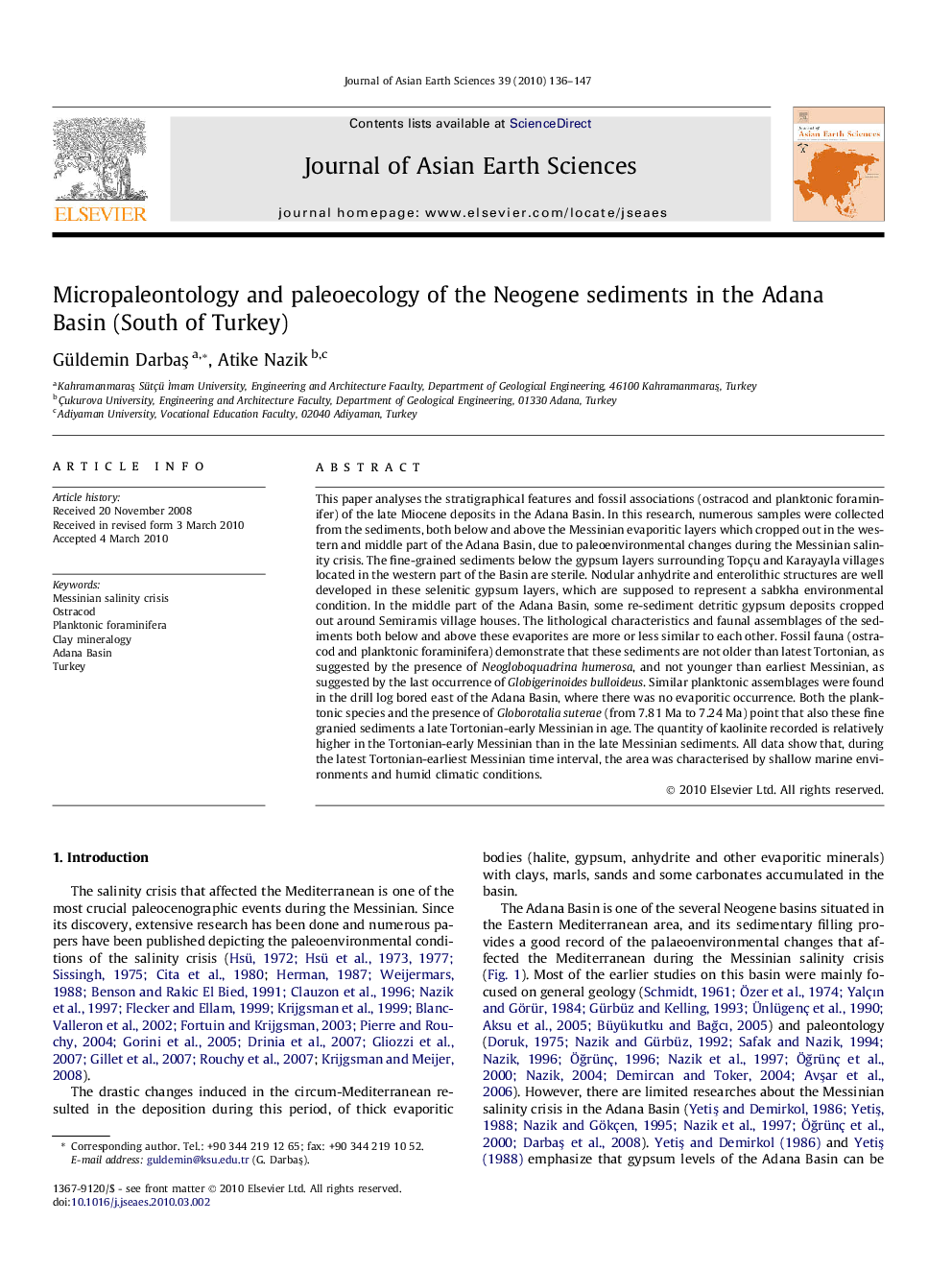| کد مقاله | کد نشریه | سال انتشار | مقاله انگلیسی | نسخه تمام متن |
|---|---|---|---|---|
| 4731896 | 1356827 | 2010 | 12 صفحه PDF | دانلود رایگان |

This paper analyses the stratigraphical features and fossil associations (ostracod and planktonic foraminifer) of the late Miocene deposits in the Adana Basin. In this research, numerous samples were collected from the sediments, both below and above the Messinian evaporitic layers which cropped out in the western and middle part of the Adana Basin, due to paleoenvironmental changes during the Messinian salinity crisis. The fine-grained sediments below the gypsum layers surrounding Topçu and Karayayla villages located in the western part of the Basin are sterile. Nodular anhydrite and enterolithic structures are well developed in these selenitic gypsum layers, which are supposed to represent a sabkha environmental condition. In the middle part of the Adana Basin, some re-sediment detritic gypsum deposits cropped out around Semiramis village houses. The lithological characteristics and faunal assemblages of the sediments both below and above these evaporites are more or less similar to each other. Fossil fauna (ostracod and planktonic foraminifera) demonstrate that these sediments are not older than latest Tortonian, as suggested by the presence of Neogloboquadrina humerosa, and not younger than earliest Messinian, as suggested by the last occurrence of Globigerinoides bulloideus. Similar planktonic assemblages were found in the drill log bored east of the Adana Basin, where there was no evaporitic occurrence. Both the planktonic species and the presence of Globorotalia suterae (from 7.81 Ma to 7.24 Ma) point that also these fine granied sediments a late Tortonian-early Messinian in age. The quantity of kaolinite recorded is relatively higher in the Tortonian-early Messinian than in the late Messinian sediments. All data show that, during the latest Tortonian-earliest Messinian time interval, the area was characterised by shallow marine environments and humid climatic conditions.
Journal: Journal of Asian Earth Sciences - Volume 39, Issue 3, 10 August 2010, Pages 136–147